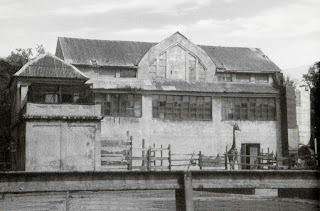The Kaliningrad Zoo was founded in 1896 as the Konigsburg Tiergarten in the then German town of Konigsberg, which in 1945 became part of Russia and was renamed Kaliningrad. Thus, the zoo is one of the oldest zoological gardens in Russia, and one of the largest. Its collection, which extends over 16.5 ha, comprises 315 species with a total of 2264 individual animals (as of 2005).
Sights include not only animals, but also rare plants like a relict ginkgo tree which was growing with the dinosaurs. The new entrance is decorated by a sculpture of many animals. The grounds include pre-war buildings and a fountain.
The site of the modern zoo was home in 1895 to the Northeast German industrial and craft exhibition. Its supervisor Hermann Claab proposed keeping the wooden pavilions to make a zoo. This idea met with support and enthusiasm among Königsbergers, as the creation of a zoo had been discussed since the 1880s.
On August 22, 1895 the "Tiergarten Society" was created to realize the plan. Its chairman was privy councillor Maximillian Braun, head of the zoological institute at the University of Konigsberg. The press actively supported the project, having given Königsbergers an opportunity to express their opinion in the newspapers.
Using the society dues and with the financial help of patrons of art who supported the idea (but without public funds), the society refurbished the exhibition pavilions. Hermann Claaß became the zoo's technical head (and after 1897 the director). Building was a joint effort by Claaß, the park technician Model and assistant technician Wichul. The zoo's solemn opening took place on May 21, 1896. At that time, the collection had 893 specimens representing 262 species.
As the zoo received no state funds, several activities were arranged to bring in revenue. A band gave open-air concerts every day in summer and at a concert hall every Sunday in winter. In June 1906, the zoo organized the novel entertainment of a hot air balloon ride (up to 300 metres (980 ft)), which cost three marks. By comparison, the 1910 entrance fees were 50 pfennigs (for adults) and 20 pfennigs (for children). However, there was a reduction on the third Sunday of each month. The zoo was open every day in summer from 7 a.m. to 11 p.m. and in winter from 8 p.m. until dark. The profit from this activity went towards maintenance of the collection, which, by 1910, had reached 2161 specimens.
After the war, when the zoo had lost it's elephant, the building in the top two pictures was refurbished to house a giraffe
The zoo lost its prosperity when the First World War began and was closed on August 17, 1914. All available buildings were used by the military as warehouses for uniforms. The zoo opened again in 1918, but was unable, in the post-war decline, to regain its former glory. The collection diminished severely and consisted in 1921 only of 565 animals.
In 1938 the zoo became the property of the city of Königsberg, and the Tiergarten society was dissolved.
The main building in 2009
1921








No comments:
Post a Comment